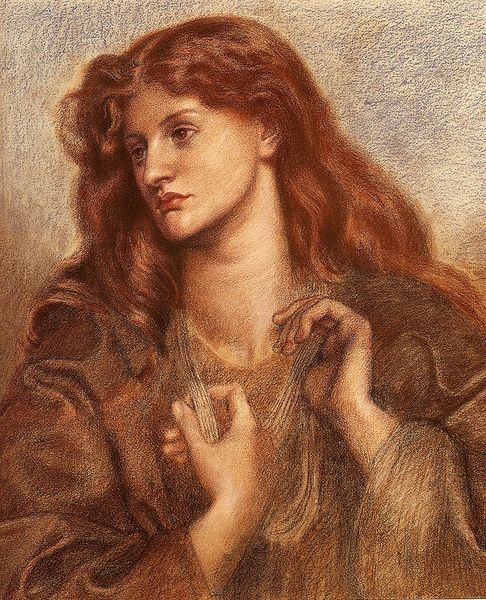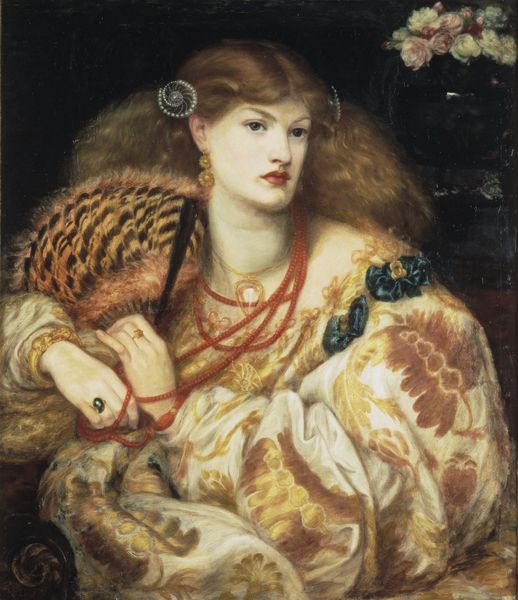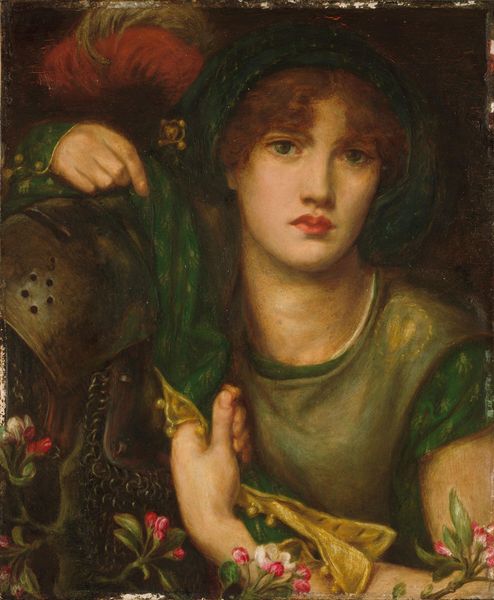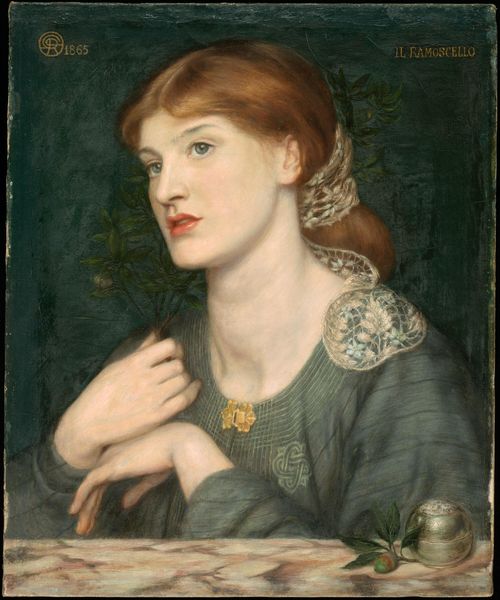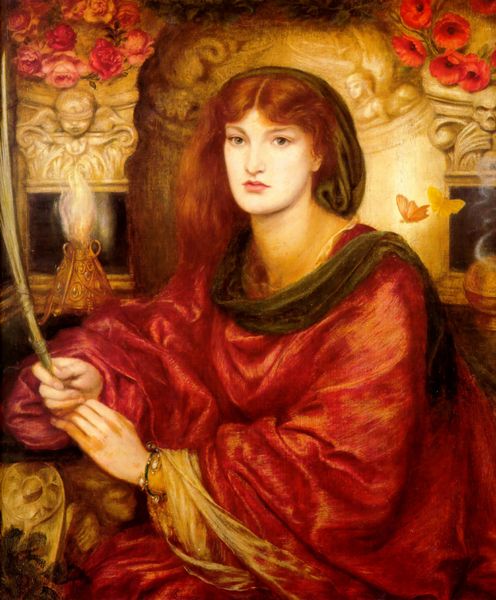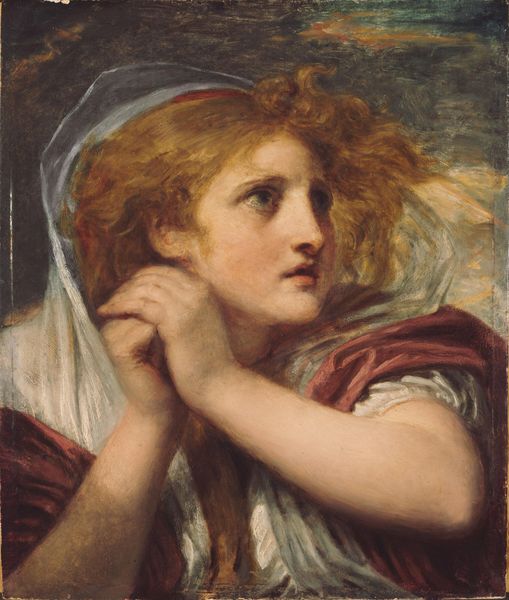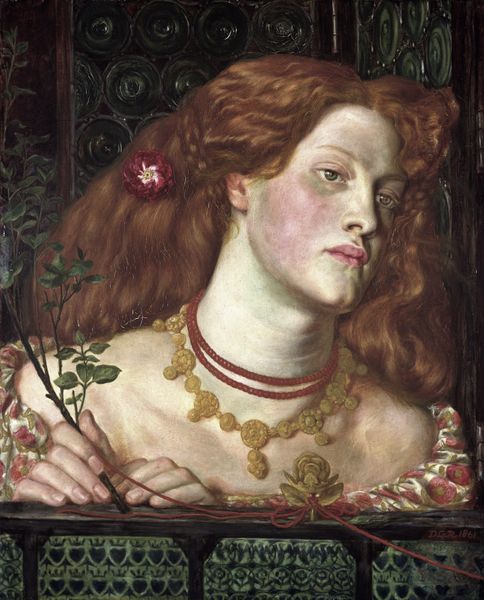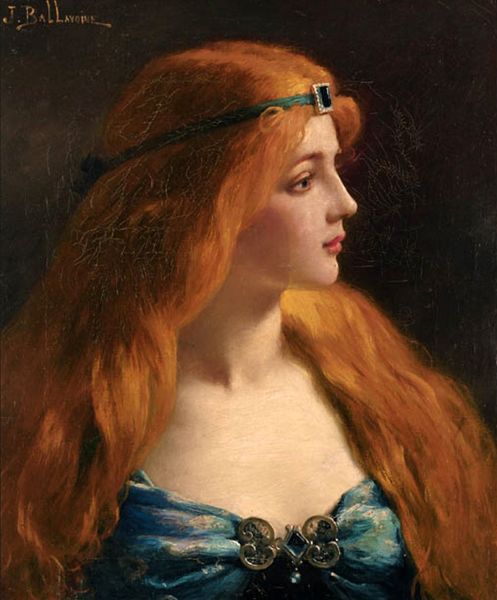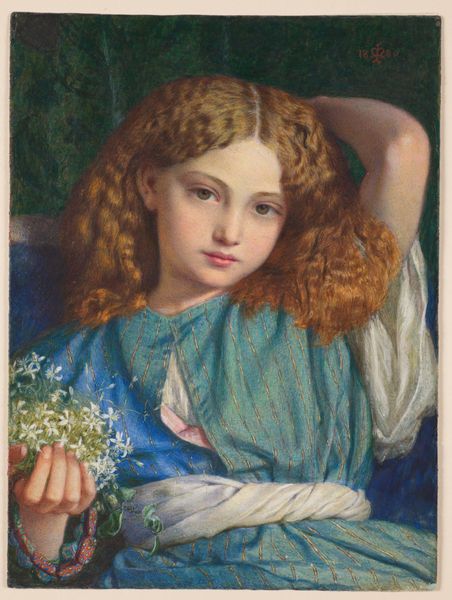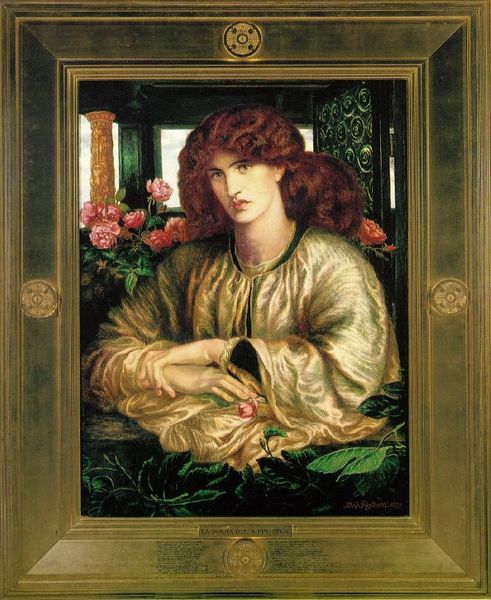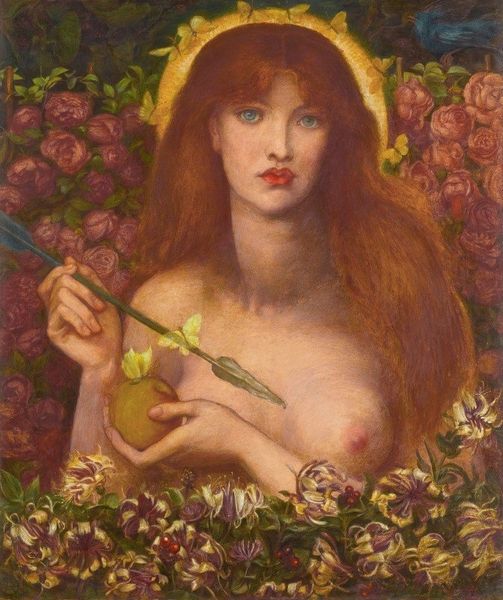
Dimensions: 31 x 27 cm
Copyright: Public domain
Editor: This is Dante Gabriel Rossetti’s "Helen of Troy," painted in 1863 with oil paint. There’s a certain stillness about her; the details of her garment and jewelry feel meticulously rendered. How would you approach understanding this piece? Curator: A materialist lens leads me to focus on the opulence Rossetti depicts and what that signified for his Victorian audience. Look closely at the layering of the oil paint, mimicking the texture and weight of fabrics like silk or damask and expensive materials like gold and gemstones. What story do these meticulously rendered details tell us about Victorian-era consumption and societal values? Editor: So, less about Helen herself and more about the Victorian fascination with luxury and beauty as a commodity? Curator: Precisely! Rossetti, as a Pre-Raphaelite, engaged critically with industrialization. Think about how the "hand-made" aesthetic – seemingly evident in the details of her hair and dress - contrasts with mass-produced goods flooding the market. How does Helen, as a historical figure, become a vehicle to express concerns about shifting social structures and class anxieties connected to access and ownership of material culture? Editor: I see now. It's almost like Helen’s beauty and adornments, painstakingly reproduced, are a commentary on the period’s obsession with acquiring and displaying wealth. Does her role as the catalyst of the Trojan War become secondary in this interpretation? Curator: It’s not about discarding that narrative but understanding it is layered with commentary on the economic structures that created Rossetti's world and how he participated in them. By focusing on the material reality represented, we see the work engaging with Victorian-era capitalism and the romanticized longing for pre-industrial artistry. Editor: That completely shifts my perspective! I was caught up in the aesthetic, but I understand now that the materials and how they’re rendered point to a deeper social commentary. Thanks! Curator: Indeed. Considering art's materials and mode of production allows us to peel back layers of meaning, revealing often-unacknowledged economic and social dimensions.
Comments
No comments
Be the first to comment and join the conversation on the ultimate creative platform.

